Abstract
We studied the incidence of referral for treatment of end-stage renal disease (ESRD) in the Kaiser Foundation Health Plan (KFHP) in northern California from 1972 through 1977. In this population of over 1 million persons, we found an age-adjusted annual incidence of 44.9 per million after 1973, when the Federal ESRD Program went into effect. Age-specific incidence was highest in in men greater than 70 years of age and in women in the 50- to 59-year age group; the male/female ratio was 1.4:1. The most common diagnoses of patients referred with ESRD were glomerulonephritis (11.4 per million per year), diabetic nephropathy (5.0 per million per year), primary hypertensive disease (3.1 per million per year), and polycystic kidney disease (2.4 per million per year). Estimated rates of referral for ESRD were highest for Blacks, lowest for Whites, and intermediate for Asians. Incidence varied by geographic area within the health plan service area and was highest where the percentage of the Black population was highest.
Full text
PDF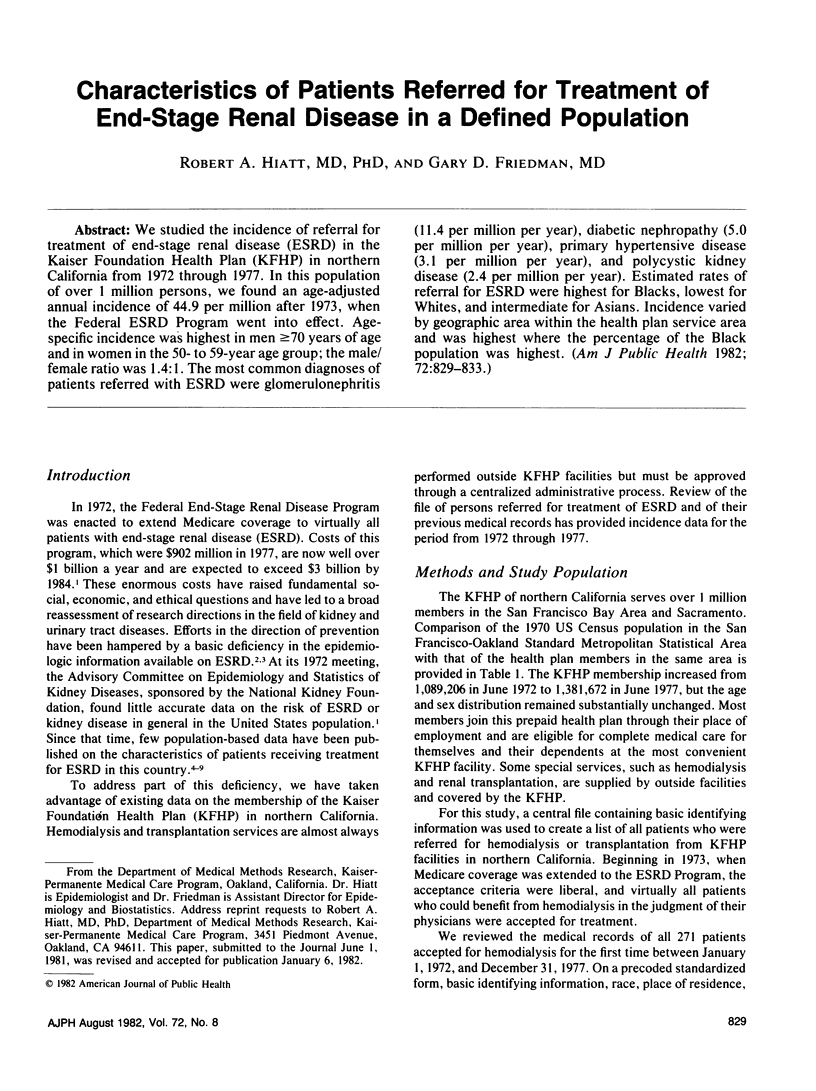
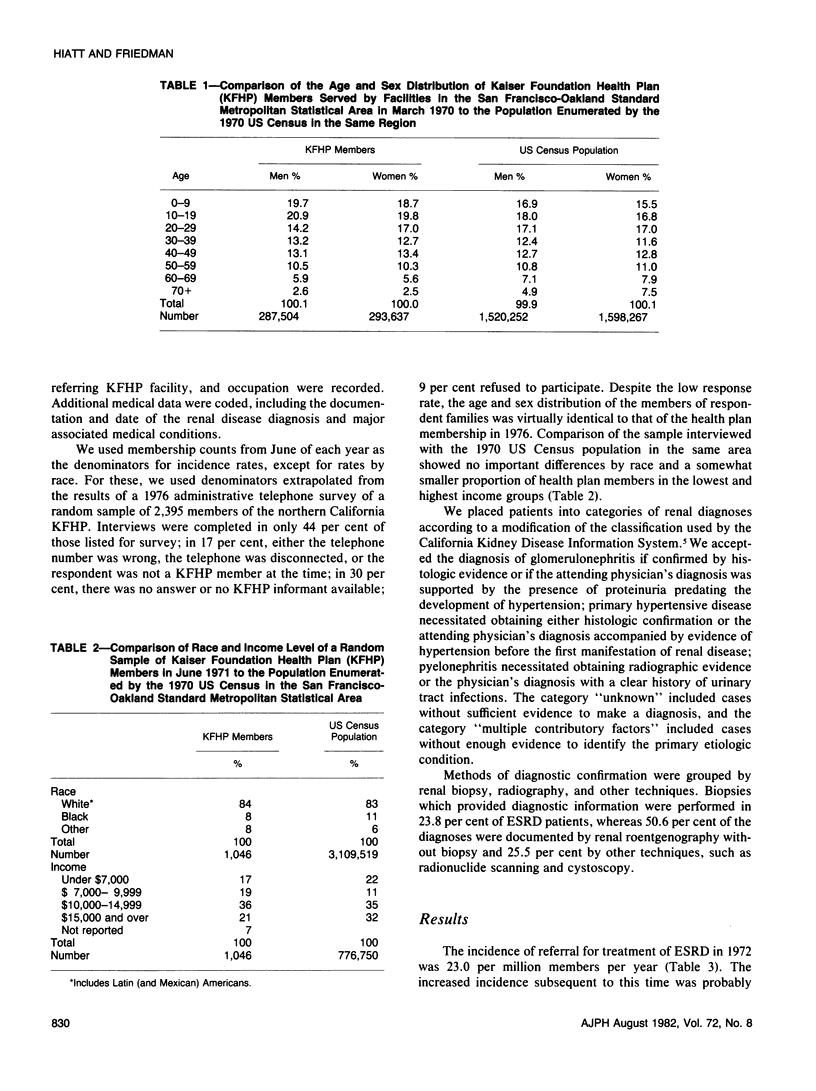
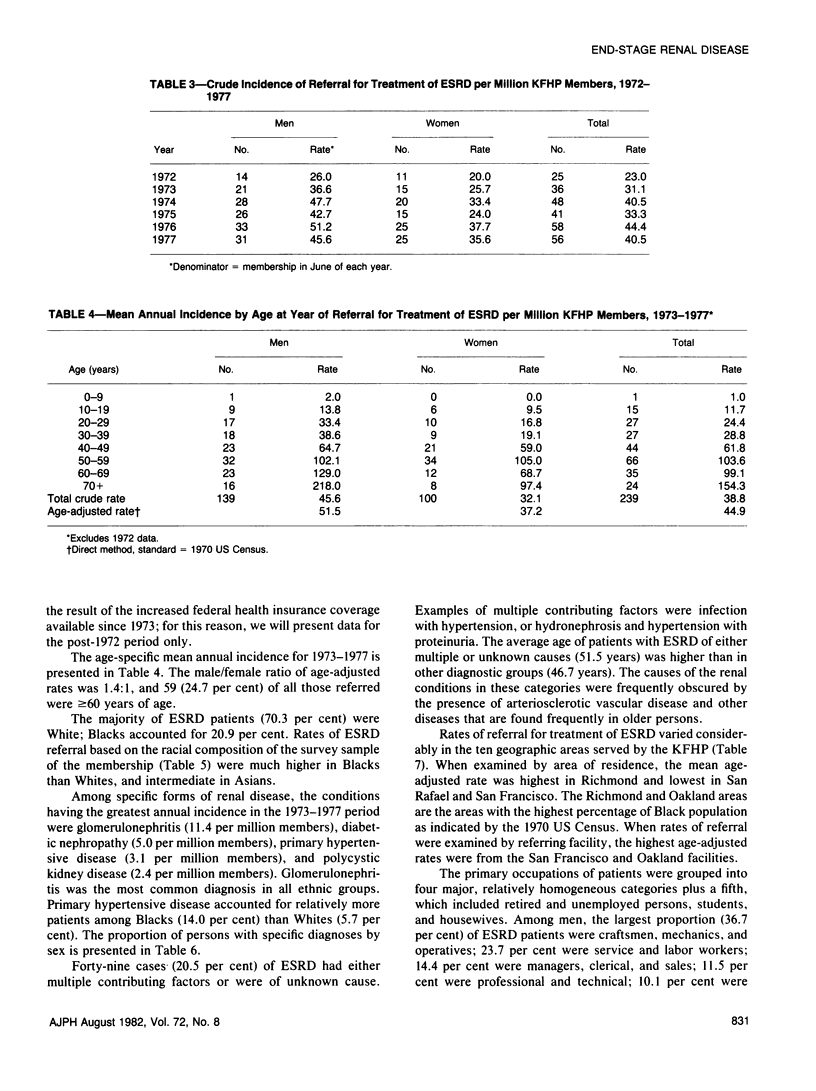
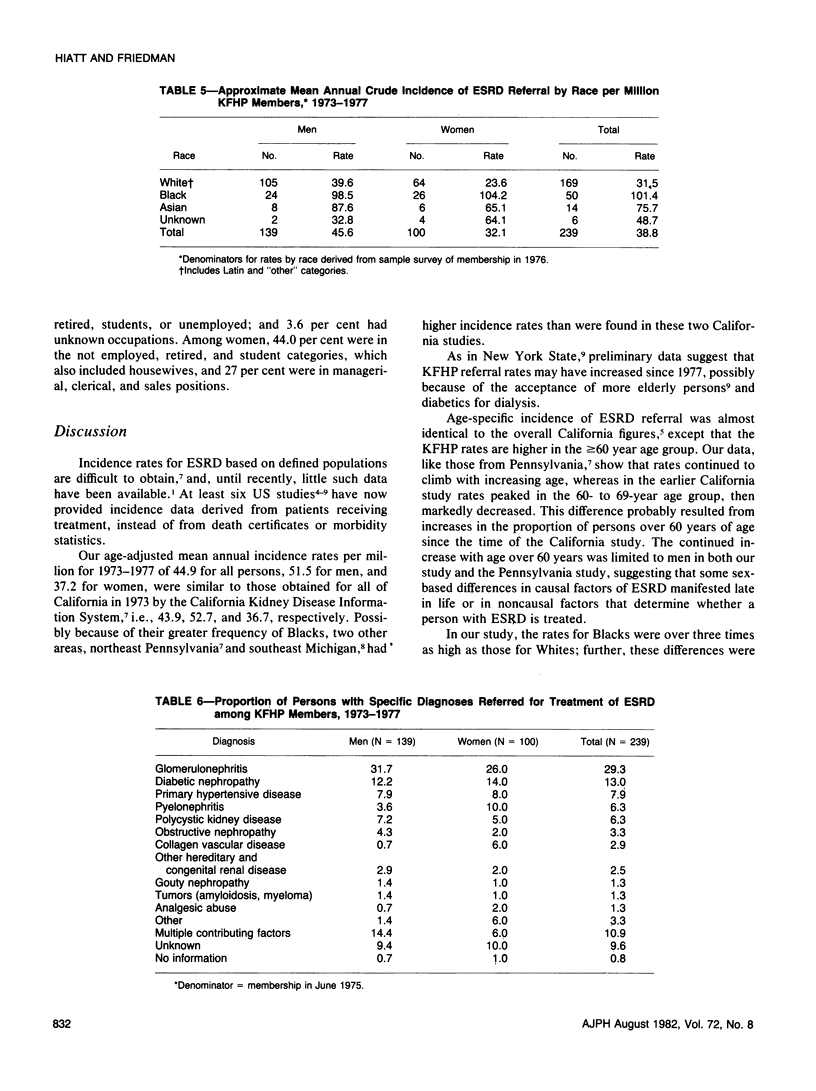
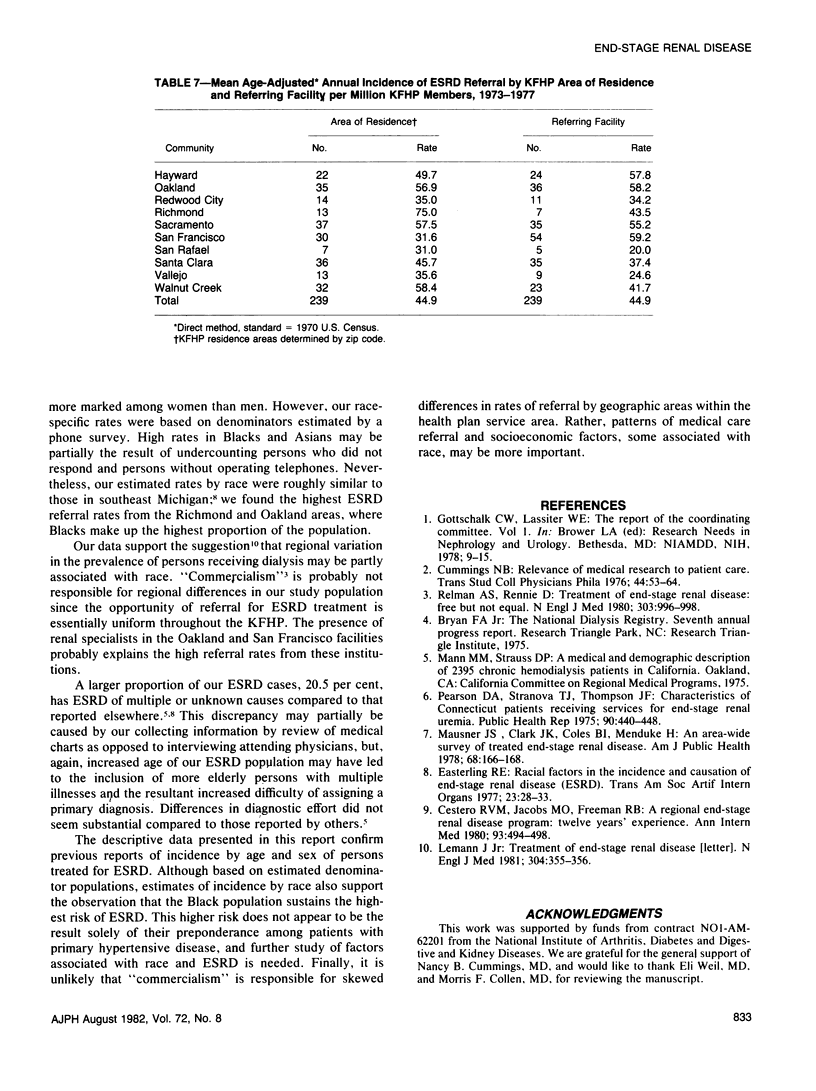
Selected References
These references are in PubMed. This may not be the complete list of references from this article.
- Cestero R. V., Jacobs M. O., Freeman R. B. A regional end-stage renal disease program: twelve years' experience. Ann Intern Med. 1980 Sep;93(3):494–498. doi: 10.7326/0003-4819-93-3-494. [DOI] [PubMed] [Google Scholar]
- Cummings N. B. Relevance of medical research to patient care. Trans Stud Coll Physicians Phila. 1976 Oct;44(2):53–64. [PubMed] [Google Scholar]
- Easterling R. E. Racial factors in the incidence and causation of end-stage renal disease (ESRD). Trans Am Soc Artif Intern Organs. 1977;23:28–33. doi: 10.1097/00002480-197700230-00008. [DOI] [PubMed] [Google Scholar]
- Mausner J. S., Clark J. K., Coles B. I., Menduke H. An areawide survey of treated end-stage renal disease. Am J Public Health. 1978 Feb;68(2):166–169. doi: 10.2105/ajph.68.2.166. [DOI] [PMC free article] [PubMed] [Google Scholar]
- Pearson D. A., Stranova T. J., Thompson J. D. Characteristics of Connecticut patients receiving services for end-stage uremia. Public Health Rep. 1975 Sep-Oct;90(5):440–448. [PMC free article] [PubMed] [Google Scholar]
- Relman A. S., Rennie D. Treatment of end-stage renal disease: free but not equal. N Engl J Med. 1980 Oct 23;303(17):996–998. doi: 10.1056/NEJM198010233031708. [DOI] [PubMed] [Google Scholar]
- Treatment of end-stage renal disease. N Engl J Med. 1981 Feb 5;304(6):355–357. doi: 10.1056/NEJM198102053040611. [DOI] [PubMed] [Google Scholar]


